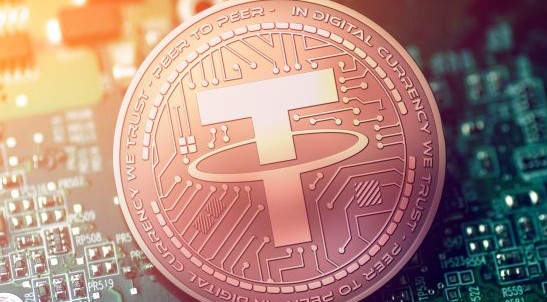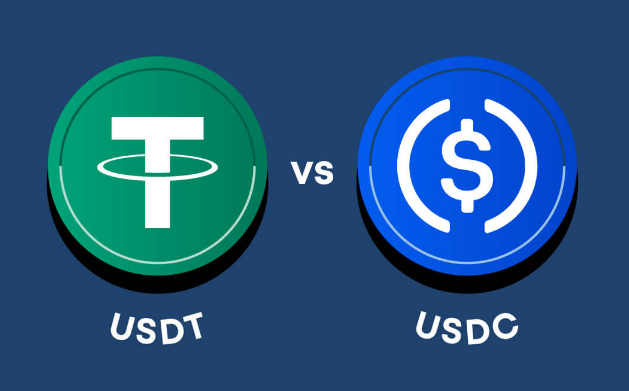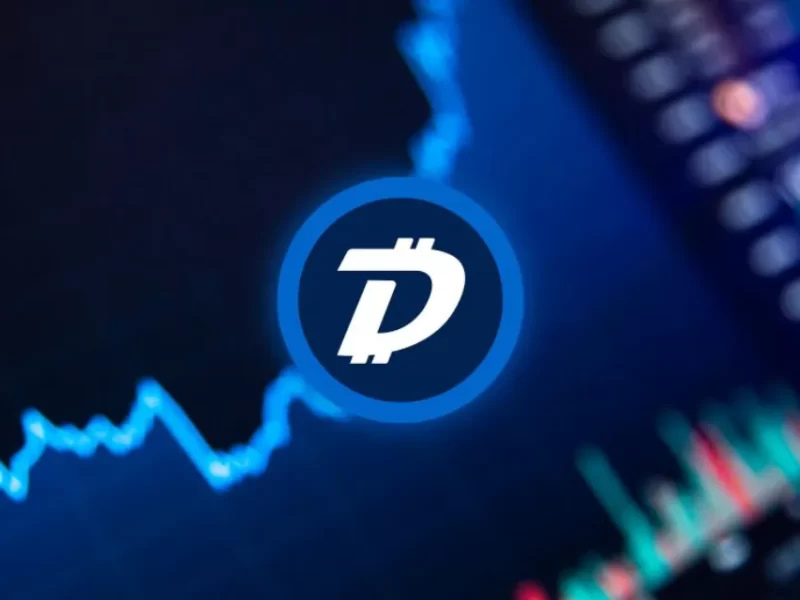Understanding how each stablecoin operates can be useful when deciding which one is best for your needs. Learn more in this article about the differences between Find out why you should include USDC and USDT in your cryptocurrency portfolio and why they have such a high yield by reading on.
Both USD Coin (USDC) and Tether (USDT), which are tied to the US dollar, have emerged as the top stablecoins, consistently dominating the market and being available on almost all of the major cryptocurrency exchanges, wallets, and applications.
What is a Stablecoin?
A stablecoin is a cryptocurrency whose value is backed by an external asset, such as the US Dollar.
Early cryptocurrencies like Bitcoin could only be traded for other cryptocurrencies or fiat money for a very long time. There was no way for cryptocurrency owners to exchange their coins for a fiat-backed asset without leaving the entire crypto ecosystem. Stablecoins came into play here.
Read More: Crypto Compare Guide 2023 – Exchanges, Wallets, Tokens & More
Many crypto traders utilize stablecoins in order to remain in the ecosystem by holding an asset with a constant price. A less volatile digital currency by design, you can exchange them 24 hours a day without having to cash out to your bank. As long as the backing ratio holds true, these tokens will continue to hold their current value.
Read More:
Why Are There So Many USD Stablecoins?
With multi-billion-dollar market capitalizations, The two stablecoins with the greatest adoption today are USDT and USDC. However, they are not alone.
Both Dai (DAI), based on Ethereum, and Binance’s own stablecoin, BUSD, were created specifically for use on those networks. Similar to USDC and USDT, neither of these coins will ever be worth less than $1, but that doesn’t mean they are completely interchangeable; which one you choose to buy will depend on which blockchain and applications you intend to use.
Why Are USD Stablecoins Popular?
With their fixed value, USD stablecoins in particular offer traders a way to enter and exit positions in more volatile cryptocurrencies as they work as a store of value. similar to how the U.S. Given that the dollar (USD) represents 90% of all foreign exchange transactions, the fact that stablecoins are typically backed by the dollar is not surprising.
Before stablecoins, traders had to repeat the process for each trade in order to convert their crypto assets into fiat money, which was time-consuming and cost-prohibitive.
Although a few exchanges provide wallets to store USD between trades, these are region- or state-specific. When a trader’s region is unavailable, a sell order to withdraw USD to a US bank account may take up to five business days, while a sell order to withdraw via SEPA to a bank account in the EU still requires a minimum of one working day. The wait time and transaction costs for deposits and withdrawals of fiat money are added together.
Because stablecoins have stable prices, a trader could use their profits from a successful transaction to buy USD stablecoins like USDT and USDC while they waited for the next opportunity. Stablecoins have developed into a means for people to make passive income because of the demand from traders and their consistent store of value.
It is clear that stablecoins are popular. Stablecoin demand and supply have increased dramatically since January 2021 and have been growing steadily ever since, surpassing a combined market cap of over $151 billion in January 2022. The stablecoin you decide to purchase depends on the blockchain and applications you’ll be using, even though every USD-backed stablecoin is worth $1.
What is USDT?

USDT was first issued by Hong Kong-based Tether Limited in 2014 in order to bridge the gap between crypto and fiat. With its high liquidity and lack of volatility, Tether’s US Dollar offered users access to a platform-independent, blockchain-based currency for the first time. It had many of the same technical advantages as Bitcoin, Ethereum, and other cryptocurrencies.
The use case for cryptocurrencies was expanded to include remittances, payments, and more thanks to Tether’s creation of a permissionless method of sending crypto-dollars to anyone quickly, transparently, and affordably.
Numerous cryptocurrency trading pairs started listing against USDT as soon as the coin was released, giving it a competitive advantage in the stablecoin market. On the majority of the major blockchains, including Bitcoin, Ethereum, EOS, Algorand, Tron, and others, there are currently 74.7 billion USDT tokens in circulation. The most widely used trading pair in the cryptocurrency market is USDT, which can be used on exchanges to purchase or exchange for thousands of other cryptocurrencies.
Anybody can transact quickly and cheaply with USDT, and they can also earn interest using decentralized finance protocols. Additionally, it gives businesses a way to accept fiat-denominated cryptocurrency payments without having to assume the market risk involved with accepting payments in the form of more volatile cryptocurrencies.
USDT Volume
Regarding market cap and trade volume, USDT has consistently ranked among the top 5 cryptocurrencies, frequently outpacing Bitcoin’s daily trading volume.
USDT Stability
By design, the dollar value of USDT will typically maintain a constant value of $1. Even though there may occasionally be very small price changes of a few cents, the market quickly corrects itself to go back to its fixed price of $1.
Tether Price Prediction 2022
Since its launch, the Tether (USDT) price has largely remained constant and fluctuated around $1. The USDT did, however, lose its peg due to a few external factors, but this loss was only temporary. When USDT has lost its peg in the past, as well as when the peg has risen above $1, it has always bounced back and regained it. As a result, USDT has been the most popular trading pair for a considerable amount of time.
The fact that the USDT finally lost its peg in 2022 and fell to $0.985 made the year quite interesting. The peg was quickly regained by Tether, who quickly burned through almost 3 billion tokens. In the future, it is anticipated that the USDT price will remain fixed and only slightly fluctuate. The highest possible price it could reach in 2022 is likely to be in the $1.09 to $1.12 range, while if it loses its peg, the lower support might be in the $0.995 to $0.986 range.
What is USDC?

It’s time to take a closer look at USDC (USD Coin) in cryptocurrency now that we’ve discussed USDT. In 2018, Circle and Coinbase launched USDC, which is pegged 1:1 to the US dollar. Different member organizations of the CENTRE Network, such as Coinbase, can issue and redeem USDC, in contrast to USDT, of which Tether is the sole issuer.
Commercial issuers of USDC must adhere to licensing, compliance, accounting, and technical and operational standards. Issuers must also back all tokens with fiat reserves and provide monthly proof of reserves in order for USDC to maintain a constant one-to-one backing.
According to Circle’s most recent reserve account report from December 2021, there are $42.416 billion worth of USDC stablecoins in circulation and an equivalent amount of USD (and assets denominated in USD) is held in reserve. USDC initially stated that it was backed by USD in a bank account, but they recently updated their statement to include assets with an equivalent fair value. Their website states that there are currently over 50 billion USDC in circulation, which is further evidence of the USDC stablecoin’s rising popularity.
According to US generally accepted accounting principles (GAAP), Circle has switched to holding 100% of cash and cash equivalents, which include US dollar deposits at banks and short-term, highly liquid investments that are convertible to established amounts of cash with a maturity of less than or equal to 90 days of purchase, as can be seen in their reserve account breakdown as of October 2021. The stablecoin’s focus on cash and cash equivalents is seen by USDC supporters as a sign that Circle will be able to support widespread USDC redemptions in the event of a crisis.
USDC Volume
With USDT leading the pack in terms of market cap and daily trading volume, USDC frequently comes in at number 10.
USDC Stability
At around $1, USDC has remained stable. Any stablecoin may experience brief fluctuations, but these are quickly fixed and the price is quickly returned to $1.
Usd Coin Price Prediction 2022
The USD coin experienced extreme volatility at first, shortly after it was created. Its highs were around $1.044, and its lows were $0.97. But since the previous bull run started in the final few months of 2020, USDC has kept its peg at $1. The rally was also unaffected by the erratic market conditions. However, the stablecoin saw a tremendous amount of adoption, making USDC the fourth-largest asset after Bitcoin, Ethereum, and USDT.
As it is supported by the US Dollar, it is anticipated that the USDC price will hold firmly to its peg in the upcoming days. Therefore, it seems that the stablecoin is in a very strong position and that, even if it loses its peg, it could quickly regain it. The highest level it might reach in 2022 might be around $1.03, and the lowest levels might be capped at roughly $0.988.
USDT Vs USDC
While USDT is more frequently used for trading and payments, USDC is frequently referred to as a safer stablecoin because Centre goes above and beyond to comply with audits and governmental regulations and has more open, fully-backed reserves.
Trading Pairs
Both USDT and USDC are popular choices to be used as trading pairs on DeFi (decentralized finance) protocols. With USDT’s 4-year head start, they have long been the most widely-used stablecoin with the highest consistent trading volume. USDC has since closed the gap somewhat, and is now available on many of the same blockchains as Tether.
Safety and Transparency
USDT has received some scrutiny due to Tether’s hesitance to release complete and frequent updates on how the coin is backed. On the other hand, USDC’s parent company Centre Consortium has consistently complied and positioned themselves well in regard to regulations, releasing regularly audited reports on their reserves.
Although they eventually released a breakdown of their reserves in March, 2021, Tether fought to prevent their reserve composition from going public, even going so far as asking the New York Supreme Court to block the state Attorney General from releasing documents to CoinDesk after the latter filed a Freedom of Information Law (FOIL) request.
Since then, Tether has taken steps to become more transparent by publishing the contents of their reserves and providing daily updates. While this is a good start, there are still some, such as the Commodity Futures Trading commission, calling on Tether to perform a full audit.
USDC, on the other hand, is playing it safe by complying in order to position themselves for potential future government regulations. Circle releases monthly audits into their reserves by accounting firm Grant Thornton LLP. They also pledged to only own US dollars and short term treasury bills, and may even apply for a national charter to start their own digital bank.
“There’s a reason why USDC is regulated and supervised by banking regulators under the same laws that supervise the balances you hold on PayPal or with Apple or with Square,” Circle CEO Jeremy Allaire told the Brookings Institute. “Those things have applied to us since day one. And those statutes exist so that people have confidence in these electronic payment systems. And I think that’s really important.”
Potential Regulation?
The Biden administration recently published a report calling for greater regulation of stablecoins, and the Treasury Department has pressured Congress to pass legislation requiring stablecoin issuers to become insured depository institutions (similar to a bank).
With the threat of stablecoin regulation looming, it’s vital that issuers take the precautionary steps necessary to not be caught off guard once such laws are passed. Releasing consistently audited reserve reports is a good place to start.
Should I Use USDC Or USDT?
If you’re interested in participating in a specific blockchain or DeFi protocol, then you’ll need to make sure the stablecoin you select is supported on that network. USDC and USDT can both be used for lending, staking, and providing liquidity for trading pairs, though the returns and functionality for each may vary.
Here are a few other things to consider when deciding which stablecoin to buy:
Earn Interest on USDC and USDT
DeFi offers similar services to what you can get with a bank account. One such option is to earn interest by lending your tokens on a variety of platforms. By including stablecoins in your investment portfolio, you can benefit from higher APY on less risky digital assets.
While interest rates change on a regular basis, in most cases you will still earn more by lending your stablecoins than you would by keeping your dollars in a traditional savings account. Additionally, you’ll have complete control when choosing where to invest your money compared to doing so with a standard bank.
DeFi Rate is one tool where you can view current APY on different coins. The top ten lending providers here offer interest rates ranging between 2-9% for lending USD Coin, with an average of 4.4% monthly APY.
Staking Rewards is one of many tools you can use to view current USDT lending rates. The average APY here is significantly higher than it is for USDC, with APY as high as 150.58%.
Of course, there are always risks associated with such lofty potential returns, and it’s important to always do your own research to understand each platform and financial instrument.
How to Buy USDT Or USDC
With MoonPay, you can purchase USDT or USDC in seconds with your credit / debit card, bank transfer, Apple Pay, Samsung Pay, or Google Pay. No waiting around for days while your funds settle.
USDC Vs USDT: Final Thoughts
USDC and USDT are but two of many stablecoins offered in the crypto ecosystem today.
While USDT is the most heavily traded, its parent company Tether has been reluctant to comply with audits and investigations, and has skirted somewhat around the issue of inevitable regulation. Although you can earn high returns on your USDT investment, there has long been some uncertainty surrounding Tether’s backing of the coin.
USDC, on the other hand, has been diligent in planning ahead for potential government oversight into stablecoins. You can still buy and lend your USD Coin for a comfortable gain, while knowing your downside is mitigated through the Centre Consortium’s compliance and monthly audits.
FAQs
Should You Buy USD Coin Or Tether (USDT)?
USDT & USDC are the most popular stablecoins in the crypto space, sharing positions within the top 5 crypto assets according to market capitalization. Both stablecoins carry their own potential and purpose to thrive within the crypto space. Therefore, these stablecoins are expected to remain stagnant for the rest of 2022 without losing their peg.
Is Tether a Good Investment Or a USD Coin?
Tether and USD Coin have both been performing extremely well amid the shaky market conditions. Therefore, both coins are considered to carry out any trade more than any other crypto asset. Hence, with deep research and observing the market sentiments, one can consider investing in either USDT or USDC.
How to Invest in Tether and USD Coin?
Investing in Tether (USDT) or USD Coin (USDC) is simple and safe on CoinDCX, crypto app. All you need to do is just follow a couple of steps mentioned below,
- Download the CoinDCX App on your smartphone
- Enter the details required for registration
- Complete the KYC
- Once verification is completed, transfer funds to your CoinDCX wallet and buy USDT or USDC
Is USDT the Same as USDC?
USDT and USDC are both popular stablecoins within the crypto space but differ slightly in terms of the reserves they are backed by and the way they both function. USDT is backed by the Tether reserves, which constitute fiat, bonds, etc. While USDC is completely back by the institutions which are regulated by the government authorities.
Which is Safer: USDC Or USDT?
While both stablecoins are extremely popular in the crypto space, USDT has been under constant surveillance by the authorities due to multiple controversies the project has been in all these years. While Circle, which maintains the USDC’s operations, has been pretty transparent comparatively.
Which Stablecoin is Better: USDC Or USDT?
USDT is currently the third largest crypto asset after Bitcoin and Ethereum and holds the highest trading volume, more than these assets every day. While USDC is gaining popularity and the strong fundamentals has uplifted the token into the top 5. Therefore, both the tokens are better.
IS USDT & USDC the Same as Dollars?
USDT & USDC are completely different and governed by different platforms. USDT is a private crypto-based stablecoin which is backed by the reserves of its parent company Tether. The reserves contain various assets, bonds, and also the USD. While US Dollar is a government-issued & managed fiat currency.



